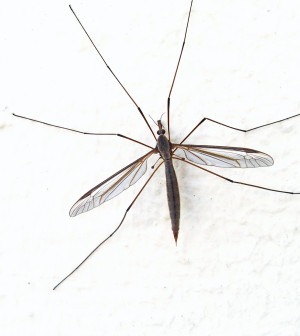- Navigating Your Midlife Crisis: Embracing New Possibilities
- City Raccoons Showing Signs of Domestication
- Mapping the Exposome: Science Broadens Focus to Environmental Disease Triggers
- One Week Less on Social Media Linked to Better Mental Health
- Your Brain Changes in Stages as You Age, Study Finds
- Some Suicide Victims Show No Typical Warning Signs, Study Finds
- ByHeart Formula Faces Lawsuits After Babies Sickened With Botulism
- Switch to Vegan Diet Could Cut Your Greenhouse Gas Emissions in Half
- Regular Bedtime Does Wonders for Blood Pressure
- Dining Alone Could Mean Worse Nutrition for Seniors
Zika-Linked Birth Defects Surge in Colombia: CDC

The tragedy of hundreds of babies born with devastating birth defects linked to the Zika virus is no longer confined to Brazil, a new report confirms.
Colombia is now also experiencing a surge in these cases of infant microcephaly. It’s a birth defect where newborns whose mothers contracted the mosquito-borne virus in pregnancy are born with too-small skulls and underdeveloped brains.
A team led by Margaret Honein, of the U.S. Centers for Disease Control and Prevention, reported that between Jan. 31, 2016 and mid-November 2016, there were 476 cases of microcephaly in Colombia, a fourfold increase from the same period in 2015.
There were nine times as many cases of microcephaly in July 2016 than in July 2015, the researchers said.
And because Colombia’s surveillance of birth defects relies on voluntary reporting, the new data “likely underestimates the actual prevalence of birth defects, including those defects associated with Zika virus infection during pregnancy,” Honein’s team said.
The findings show that an increase in microcephaly cases is not restricted to Brazil, and that other countries with Zika outbreaks are likely to have large increases in microcephaly and other Zika-related birth defects, the CDC said.
The study also found that the peak in cases of microcephaly in Colombia occurred about six months after the highest number of new Zika infections were reported. This suggests that the greatest risk for Zika-related microcephaly likely arises in the first half of pregnancy — especially the first trimester and early in the second trimester.
Between Aug. 9, 2015 and Nov. 12, 2016, there were about 105,000 cases of Zika virus in Colombia, including nearly 20,000 cases involving pregnant women.
According to the latest figures from the CDC, there have so far been 32 cases of Zika-related birth defects to live-born infants in the 50 U.S. states and the District of Columbia.
However, there’s also some good news on Zika in the United States: On Friday the CDC declared that the state of Florida is now free of the Zika virus.
One area in south Miami Beach had remained an active zone for local transmission of the virus. But the CDC said in a statement Friday that there have been no new cases of local Zika transmission in south Miami Beach for more than 45 days, so that neighborhood is no longer considered an active zone.
But, Texas officials, who recently reported a suspected case of local infection, said Friday that they have identified four more cases of suspected locally transmitted Zika virus in Cameron County, near the border with Mexico.
The Colombian study was published Dec. 9 in the CDC’s Morbidity and Mortality Weekly Report.
More information
The U.S. Centers for Disease Control and Prevention has more on the Zika virus.
Source: HealthDay
Copyright © 2025 HealthDay. All rights reserved.










